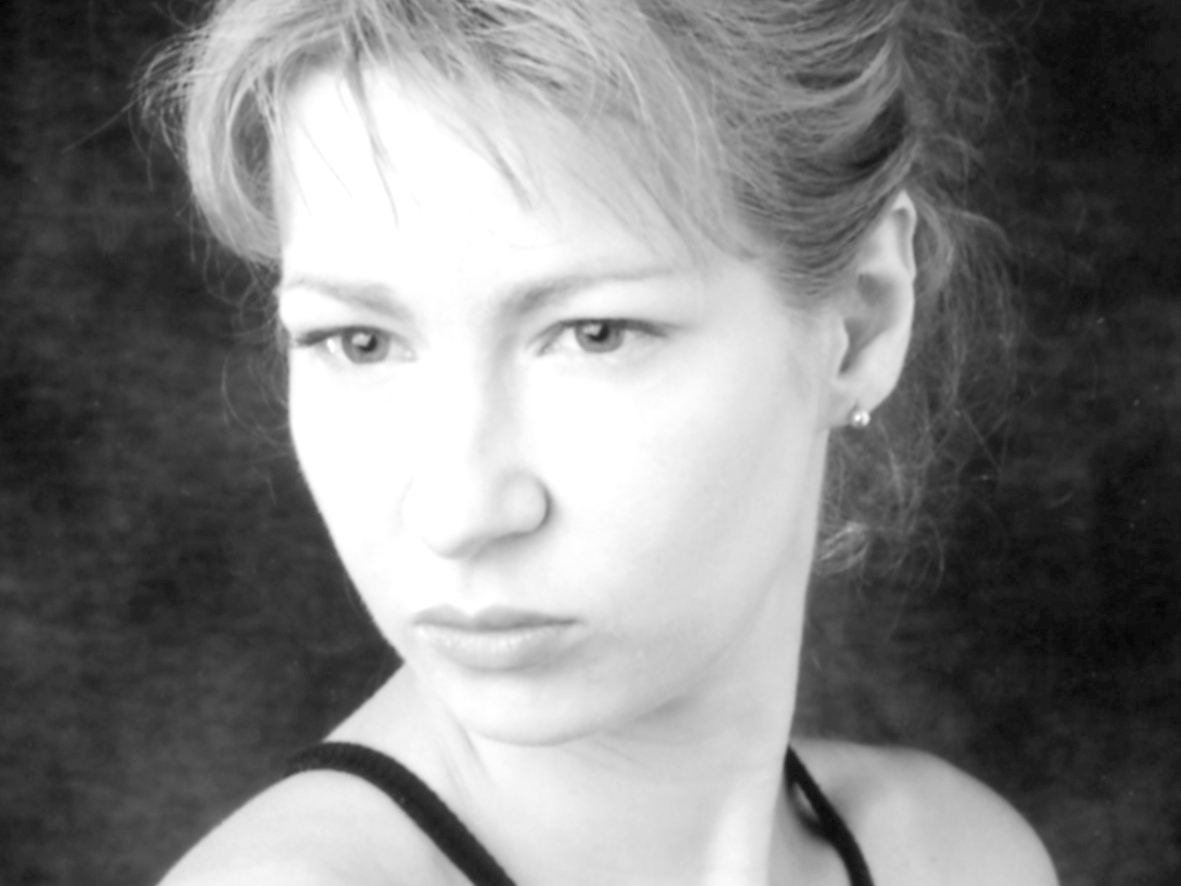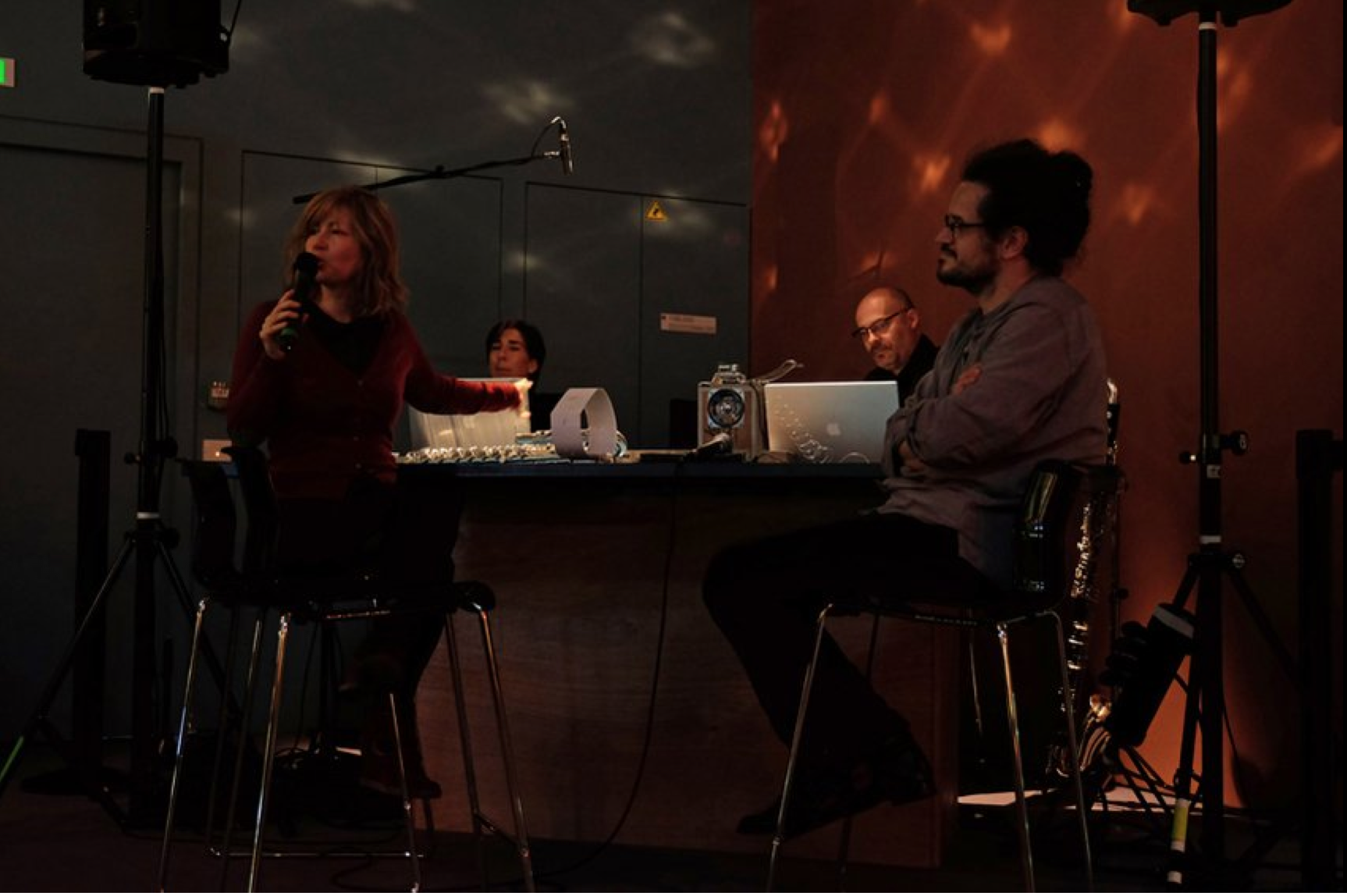
Patricia Alessandrini on Embedded with Red Note
Every year, Sound and Music shine a light on the work of the composers who are currently in residence on our Embedded and Portfolio programmes. These are our New Voices of 2016. They are creating new, exciting and innovative music, across disciplines, all over the UK.
Patricia Alessandrini, working with Red Note on Embedded, talks about her experience working with the ensemble, describing how “interactive technology will be integrated into the workshop process”. Touching on the importance of ‘expression’ when integrating technology with music, she goes on to explain how “one of the difficulties of working with technology is that on the one hand, I want to use it to create magical situations that can breach a sense of the ordinary and the possible, but at the same time I don’t want to mystify it”. Alessandrini also describes how she integrates multimedia and theatre with electronics into her work whilst also addressing themes of ‘representation, interpretation, perception and memory,’ often relating to ‘social and political issues’. Referring back to education, the EU and politics, she also talks about creativity and community knowledge-sharing…
The perfect sentence that sums up you and your music, is:
Using interactive technology to interpret the past and mediate the present.
As composer-in-residence with Red Note Ensemble on Embedded, you’ve had the opportunity to work closely with the musicians to develop your work. How have you found this experience?
Getting to know the musicians with whom I am collaborating changes the creative process entirely, as it allows them to be an integral part of that process. We are still in the early stages of this residency, however my contact so far with the performers – both the members of Red Note and students from the Artist Diploma programme of the Conservatoire de Paris (CNSMdP) – has already shaped the project for me, as it allows me not just to write parts but to create roles for the performers to play.
As the development of the interactive technology will be integrated into the workshop process, my hope is that the performers will have a profound understanding of it and connection to it, such that they can perform with it expressively. I will anyway build in features which maximise the agency of the performers, but having time for this development process both helps me to do this more effectively and gives the players valuable insights into the way the technology works.
Your project, Parlour Sounds, focuses on making sound with household technology. Why this particular theme?
One of the difficulties of working with technology is that on the one hand, I want to use it to create magical situations that can breach a sense of the ordinary and the possible, but at the same time I don’t want to mystify it. Placing this project in an imaginary home setting of the 1960’s allows me to explore my interest in combining digital technology with analogue devices and physical objects, while also subverting notions of innovation and invention by putting a woman – portrayed by the soprano of the ensemble - in a home environment at the centre of it.
Your work is known for addressing themes of ‘representation, interpretation, perception and memory,’ often relating to ‘social and political issues’. Can you elaborate on this?
To take this current work as an example, there is of course something both playful and transgressive about this theme. There is also a question of representation and mediation, as the processes of technological invention are made visible.
Do you feel that your creative practice and path has developed as a result of the residency?
Yes, most significantly in being able to develop the work collaboratively over time. The workshop performance in early February - in the Curious Series in Aberdeen – is an important step in this process, and I hope it may serve as a model for future projects.
You often integrate multimedia, theatre and electronics into your work. How do you use ‘physical’ entities with sound to bring into reality the best version of your creative vision?
Of course, there is always a physical interaction at some point with sound, even if it is produced digitally. Perhaps it is just a matter of how much significance I give this physical manifestation in my work. Having produced several pieces for instruments and live electronics, I was often frustrated by the lack of control I had in performance over the type of speakers and their placement in a given venue, the acoustics of the space, etc. I also became increasingly interested in the visual aspects of the performances. So it was a logical step for me to try to integrate systems of diffusion and resonance into the works themselves, as well as visual correlates for sound. Working with physical objects often increases the visual interest as a matter of course; for instance, in my installation Adagio sans quatuor, I use metal plates slowly bent by motors for both sonic effects and their visual correlates - the two are inextricable.
Do you have any certain triggers for ideas? What gets your creative juices flowing?
I think most artists need a balance of stimulation and reflection. For the latter, sometimes I take the advice of the composer Julio Estrada, which is to start out with an idea or image and then lie down on your back (on something not too comfortable – he suggests a wooden table) and figure out how to realise it. I work a lot at the computer, so forcing myself to stare at the ceiling or a wall helps me to problem-solve without resorting to a program or how-to search.
In terms of your work with live electronics – what recent innovations have you created? What’s your favourite way in which you’ve utilised electronics to serve a musical purpose?
I’m not sure that I have a favourite, because the way I work with electronics always suits the idea of the piece…when I am staring at the ceiling, I am not thinking about what I want to do with technology, but rather how I can use it to realise an idea. As far as innovations go, I think there are often communities of people – not necessarily geographically linked, but linked by a practice – who make similar discoveries at the same time through their work and research. Even when I design and/or physically create something new – for instance, in my work recently with Share Music Sweden in creating musical interfaces for people with different physical abilities – it is built upon existing work and almost always as part of a team. I am not totally rejecting the notion of innovation, but it isn’t the most important aspect for me either as a creative artist or researcher.
Do you have any advice for other budding music-makers who are pursuing a career in the new music sector, or in electronic music?
I think community and knowledge-sharing is very important. Don’t be afraid to ask for advice and help, you’ll have plenty of opportunities to give back that same help and advice to others.
How about any recommendations of talent to look out for in the coming year?
Well of course I am not impartial in saying this, but I would say to check out recent graduates and post-graduate students at Goldsmiths (PhD students are listed on our website by programme). We have a strong ethos of stylistic diversity and experimentation, and the students themselves contribute to this environment and help push it further. We manage to recruit students from across the UK and around the world, despite the prohibitive costs of living in London and all the hurdles the current government puts in our way. To give a few examples in electronic practice, Mari Ohno, currently in the Sound and Music residency at Café OTO, is a PhD student in Computational Arts, and Nour Emam Refai (known as NUR) is just finishing up a Masters in Sonic Arts, and I’ve seen very ambitious projects from some her classmates: Joe Brooks, Yasmin Kuymizakis and Xavier Velastin.
It’s urgent that we work to make sure young artists will still have the choice to come and study here in the future, and that British students can continue to pursue opportunities freely in the EU. As far as what we can change as artists and artistic institutions, I think we need to counter the current government’s anti-foreigner rhetoric and policies by being more open than ever, and maybe that means re-looking at our own practices. For instance, lots of opportunities have minimum residency requirements of several years, but I don’t see the difference really between being a resident in the UK for one year or three years, especially considering that non-EU Masters students are required to attend full-time, which means their programmes usually last one year, two years maximum; or consider a PhD student whose visa may not allow them to stay on in the UK after three years, exactly the point at which they become eligible for some forms of public arts funding. It’s easy enough to say, I hate Trump, Farage is an idiot, Tories are just mean, you can get just about any artist to make one of those statements, but if we could get a similar consensus on just being sensibly inclusive in our own domain and our own institutions, that would be quite an improvement already.
Find out more about Patricia on the British Music Collection // Facebook // her website
Interview by Emma Sugarman (Communications Intern - Sound and Music)
There are 25 New Voices of 2016. Find out more about them here.
Tags

